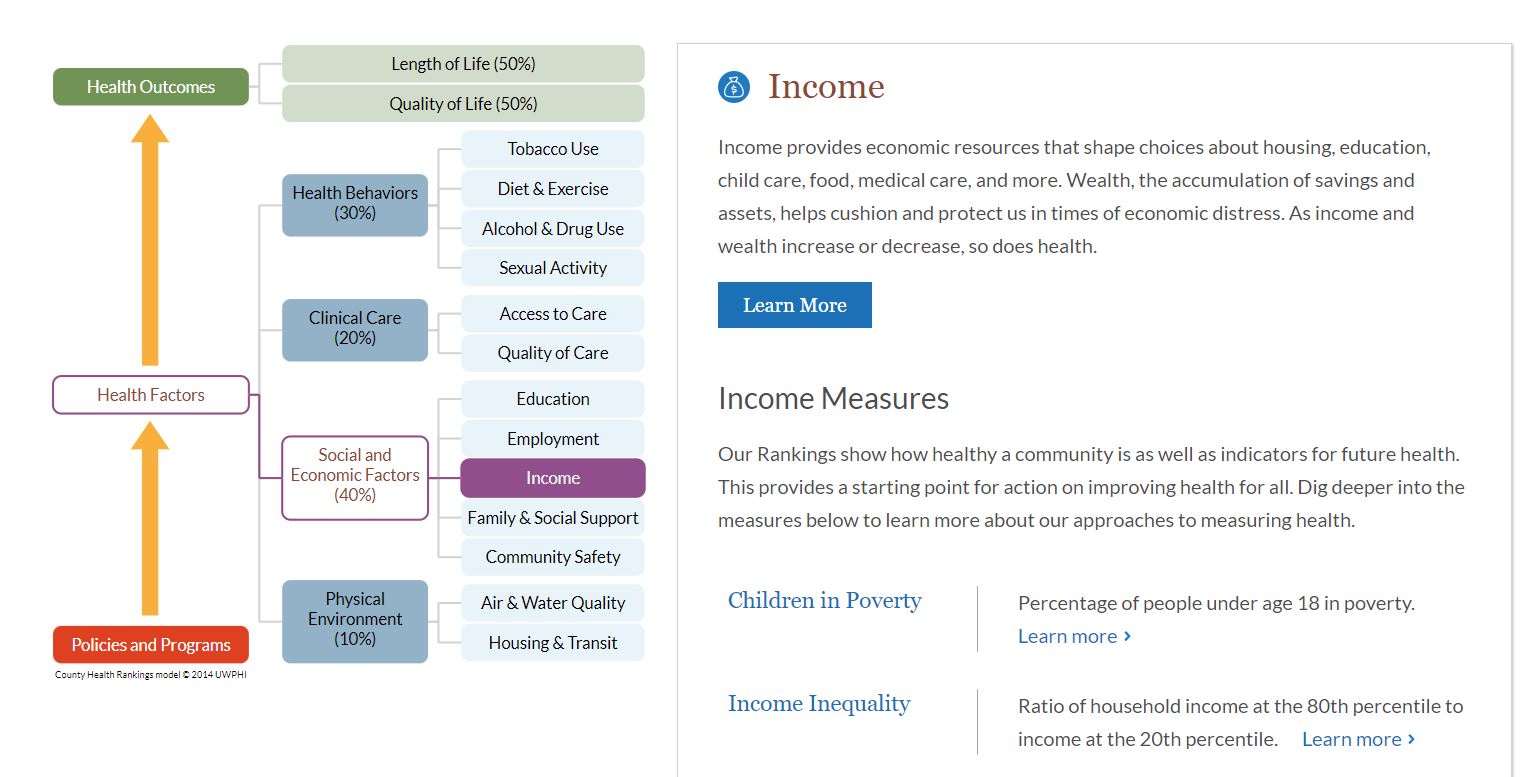Economic stability is a major domain of Social Determinants of Health (SDOH) affecting nearly every aspect of a person’s health.
“Poor families and individuals are most likely to live in unsafe homes and neighborhoods, often with limited access to healthy foods, employment options, and quality schools,” writes Healthy People 2030.
According to Healthy People 2030, 1 in 10 people in the United States live in poverty. Locally, the city of Johnstown has a 38 percent poverty rate.
In 2016, the Brookings Institute comprised a report providing a 21st Century look at the five dimensions of poverty in the United States:
- Low household income
- Limited education
- Lack of health insurance
- Concentrated spatial poverty
- Unemployment
The Brookings Institute list was based on a 1942 report called “Social Insurance and Allied Services” by British academic and civil servant William Beveridge. In Beveridge’s report, he identified “five giant evils” that needed to be confronted and defeated to guarantee an equal society. Beveridge’s five giant evils were:
- Squalor
- Ignorance
- Want
- Idleness
- Disease
In nearly 75 years, the two lists have become vastly different. The new list represents Social Determinants of Health, which account for 80% of a person’s overall health leaving a mere 20% to actual health care.
Social Economic Factors, which is the category economic stability falls under, accounts for 40% of a person’s health.
According to County Health Rankings and Roadmaps, “adults in the highest income brackets are healthier than those in the middle class and will live, on average, more than six years longer than those with the lowest incomes.”
Poverty-stricken families face continuous stress of not having the financial means to purchase healthy food, transportation, safe housing, and other aspects that lead to healthy lives. This stress leads to a myriad of health issues like increased cardiovascular risk. Children from low income families tend to be sicker and low income mothers are more likely to have pre-term or low birthweight babies. The babies are then at higher risk for chronic disease and behavioral problems – so, the cycle continues.
While the healthcare system has acknowledged that social determinants of health greatly affect an individual’s health, there is still a lot of work to do so all people can thrive.
Sources:
https://health.gov/healthypeople/objectives-and-data/browse-objectives/economic-stability#cit1
https://www.countyhealthrankings.org/explore-health-rankings/measures-data-sources/county-health-rankings-model/health-factors/social-and-economic-factors/income
https://www.healthify.us/healthify-insights/social-determinants-explored-how-economic-stability-impacts-health

